Just make sure you get the right size and place your rug so it gives your living room a sense of stability and warmth. It feels off when your room is too small. If it’s too big, it takes up all the room. This is the best way to do it.
Picking out the right rug isn’t just about style; it’s also about how it works. The best rug not only ties your furniture and color scheme together, but it also gives your sitting arrangement stability, giving the room a sense of purpose and unity. In an open-concept plan, it helps define different areas and can even soak up sound, making the space feel cozier and friendlier. When placed correctly, a rug can be the anchor that holds the whole room together, making every other piece look more planned.
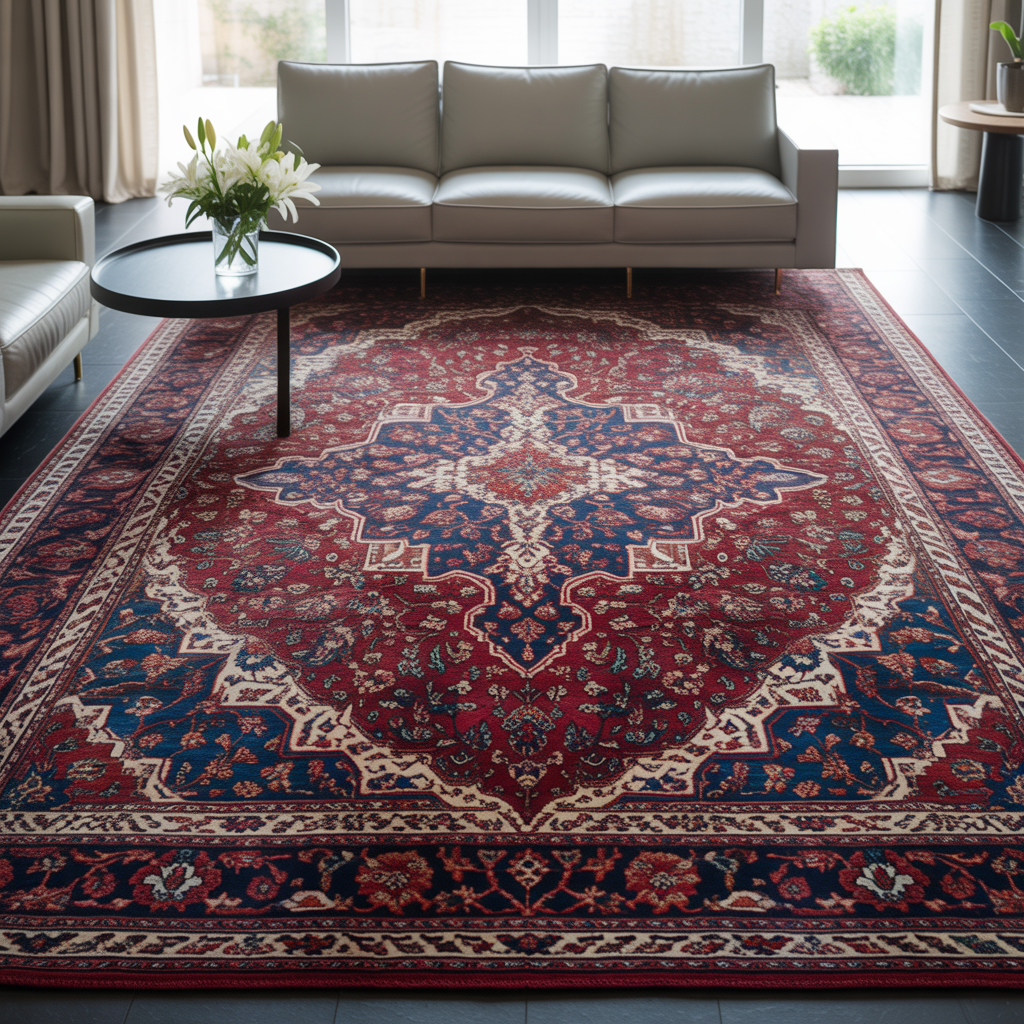
📏 Rug Sizing Tips:
📏 1. Small Living Rooms: Use a 5×8 Rug and Tuck the Front Legs of Furniture On Top
If you put the 5×8 rug in the right place, it can look great in a small living room. People make the biggest mistake when they pick a rug that is too small and put it all under the coffee table. Though this might make sense, it often makes the room feel empty and smaller than it really is.
Instead, put a little space between the front legs of your sofa and chairs and the rug. This helps connect the furniture visually, making the plan look more intentional and put together. It gives the room support without taking over, and it keeps your rug from looking like it’s flying in the middle of the floor.
Place the rug in the middle of the coffee table and pull it 6 to 8 inches under the front legs of your main chairs. This arrangement keeps your furniture in place while still showing off enough floor space to keep the room feeling open and airy. Pick a rug with a light pattern or a neutral color so it doesn’t clash with other things in the room.
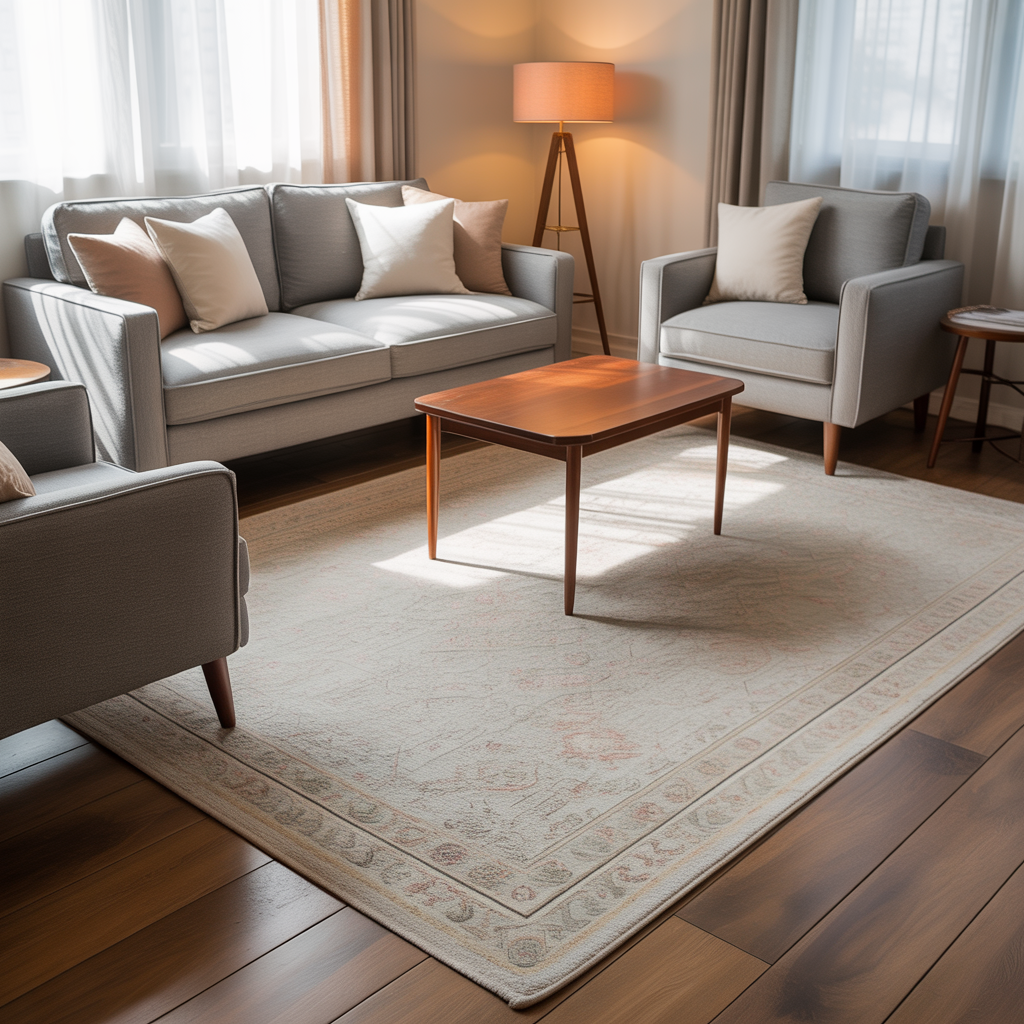
📏 2. Medium Spaces: Choose an 8×10 Rug for Full Coverage Under Furniture
An 8×10 rug is the best size for most living rooms, especially those with open floor plans or homes that are medium size. This size gives you enough space to put most, if not all, of your furniture on top of the rug, either all the way around or just partly. This makes the room look more finished and put together.
All the couch, chair, and side table front legs should rest on the floor if possible. Even better, if you have room, put all four legs of each piece on the floor. This gives the room a calm and well-thought-out feel.
An 8×10 rug is also big enough to frame the sitting area and separate it from areas next to it, like a hallway or dining room. This size keeps everything looking good when you use a bigger coffee table or an L-shaped couch. It also helps fill the room without leaving any weird gaps.
Pick a rug pattern and texture that goes with the rest of your decor. Low-pile rugs are best for places that get a lot of foot traffic, while medium-pile rugs make the space feel a little cozier and softer.
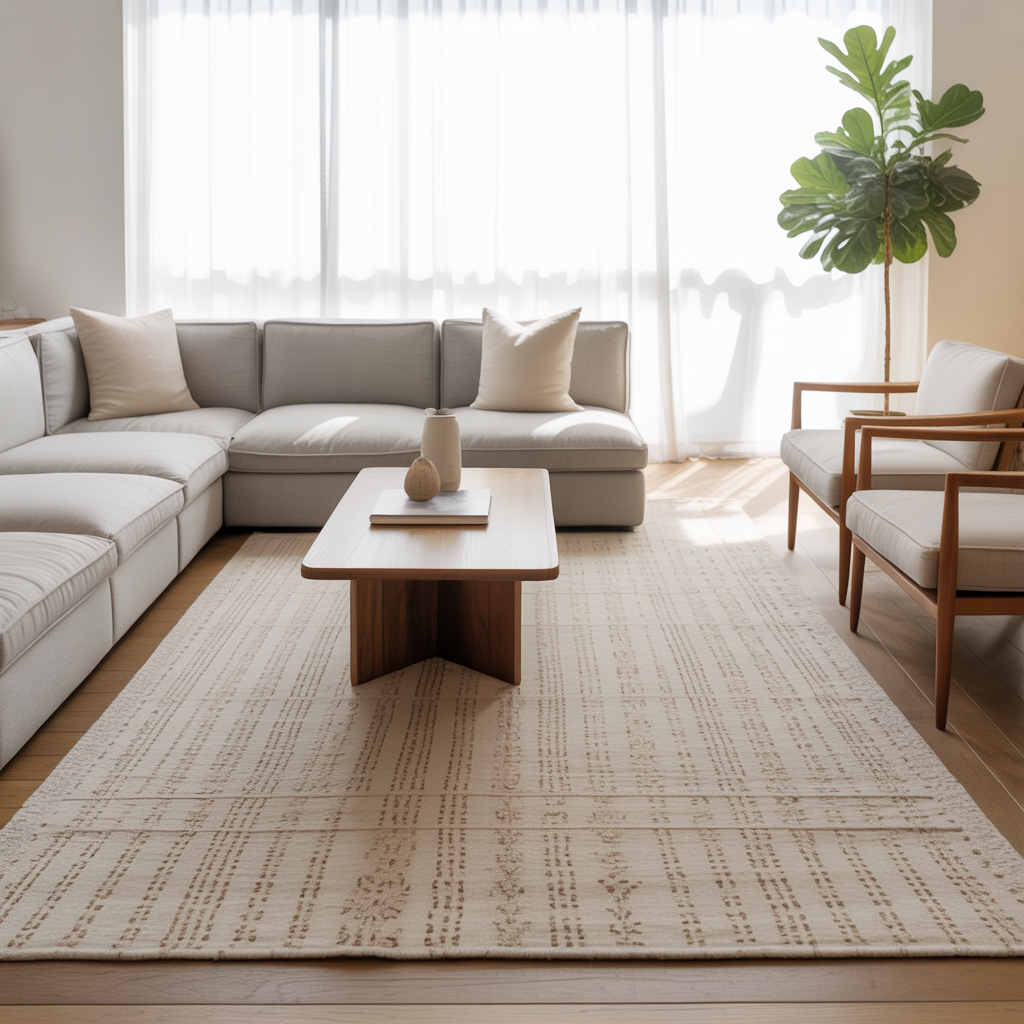
📏 3. Large Rooms: A 9×12 or 10×14 Rug Anchors the Entire Space
A 9×12 or even a 10×14 rug is the best way to make a big living room or an open floor plan feel more solid and put together. With these bigger rugs, all of your big furniture, like sofas, chairs, and coffee tables, can fit on them without any trouble.
This-sized rug helps define the sitting area in a big room, especially in open floor plans where the living room flows into other rooms, like the kitchen or dining room. In this way, it makes visual limits that give each space its own purpose while still making the whole thing feel open and linked.
It looks classy and even if you leave 12 to 24 inches of floor space between the rug and the wall. This makes a “border” around the room that keeps it from feeling too crowded. Because there is more surface area to show off the design, a big rug is also a great way to add stronger designs or brighter colors.
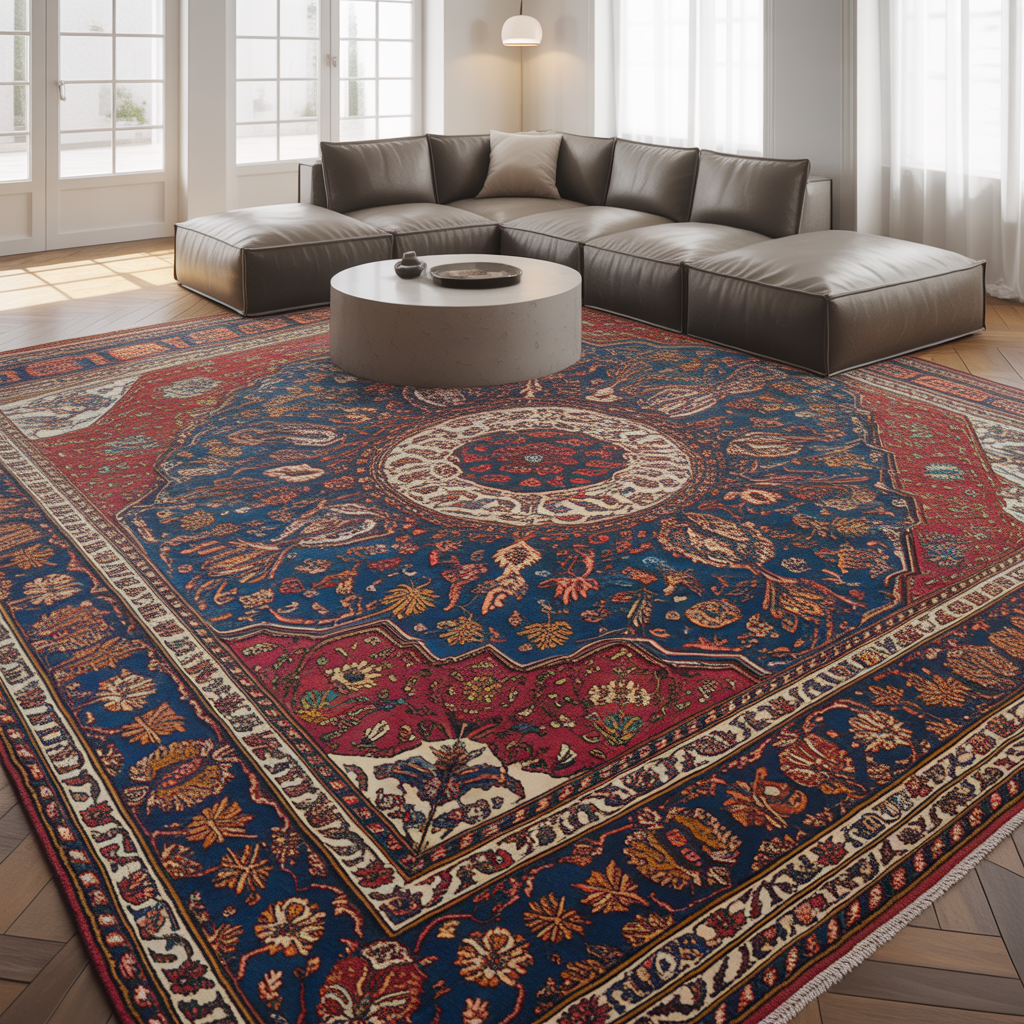
Bonus Tip: If your space is exceptionally large or uniquely shaped, consider layering rugs or using two coordinating rugs to define multiple conversation areas within the same room.
🪄 Rug Layering Tips: Add Texture and Personality
One easy way to add texture, warmth, and visual interest to your living room is to layer rugs. This is especially true if you have neutral furniture and hard floors like tile or wood. This method works well in both big and small rooms, and it’s a smart way to save money while still getting a high-end look.
To begin, you should put down a big base rug in a neutral color. This should be made of a natural fiber. These rugs are cheap, last a long time, and add a gentle base to a room without making it look too busy. Pick a size that fits most of your sitting area, like 8×10 or 9×12, based on how your room is set up.
Then, put a smaller, fancier rug on top of that. It could be a shag, kilim, Persian, or Moroccan blanket that adds color, design, or softness. This rug is usually between 5×7 and 6×9 inches, and it should go in the middle of your sitting area, under the coffee table or where people usually talk.
If you want a more laid-back, bohemian look, you can move the top rug slightly to the left or right instead of putting it in the middle. To get a more classic look, put both rugs in a square shape. You can also add layers to an old rug that is too small for a modern room to make it look more put together.
Bonus Tip: Make sure the pile heights differ—the top rug should be plusher or more visually prominent, so it feels like the star of the show.
🪑 Rug Placement Tips: Layouts That Create Balance and Flow
It’s just as important where you put the rug as what style and size it is. The way your room looks and feels depends on where things are placed. To improve balance and flow, use these tried-and-true placement tips:
🔹 Anchor Your Seating Area
The most important thing to remember about putting a rug down is that it should connect your furniture, not stand alone. All of the furniture should have at least their front legs on the floor. This makes the room feel grounded and gives it a visible anchor.
If you can, put all four legs of your sofa and chairs on the floor. This will make the room feel bigger and more connected. It gets rid of odd gaps and makes sure your furniture is set up in a way that looks like it was planned.
🔹 Mind the Edges
Leave a 6- to 24-inch space around the rug’s edge from the wall or big piece of furniture next to it. If the rug is too close, the room can look small. If it is too far away, the room can feel empty. If you have an open floor plan, the rug should help separate the sitting area from other areas or paths.
🔹 Align with Room Shape
Make sure the shape of the rug fits the shape of the room. Instead of round rugs in round rooms, use square rugs in square rooms. This keeps things from looking tense and makes the room feel naturally matched.
For rooms with an uneven plan or a L shape, you might want to use more than one rug to create different areas. For example, you could use one rug under the sofa and another under a reading chair or center table.
🔹 In Front of the Fireplace
If your living room is built around a fireplace, put the rug so that it goes in front of the fireplace and under the front legs of the chairs around it. It makes the fireplace stand out and gives the room a natural center of attention.
Bonus Tip: A rug pad underneath not only keeps your rug from sliding but adds comfort and longevity.
🏡 Final Thoughts: Let Your Rug Set the Tone
The rug in your living room is more than just a soft place to walk on; it’s also an important part of the room’s style and helps tie everything together. Whether you have a small apartment or a large open-concept space, the right rug size and placement can help you define your plan, make the room more comfortable, and improve its overall look. When you carefully arrange your furniture and items around your rug, it doesn’t just go with your style; it helps make the room feel polished and put together.
Don’t forget that it’s not just about the size of the rug; it’s also about how it fits in with the furniture and the flow of the room. Don’t be afraid to try different patterns, textures, or even adding rugs to give your room more depth and personality. Now that you know these tips, you should be able to pick out and place a rug that looks like it was done by a pro.
Carefully measure your space and let your rug set the tone for a living room you’ll love coming home to.

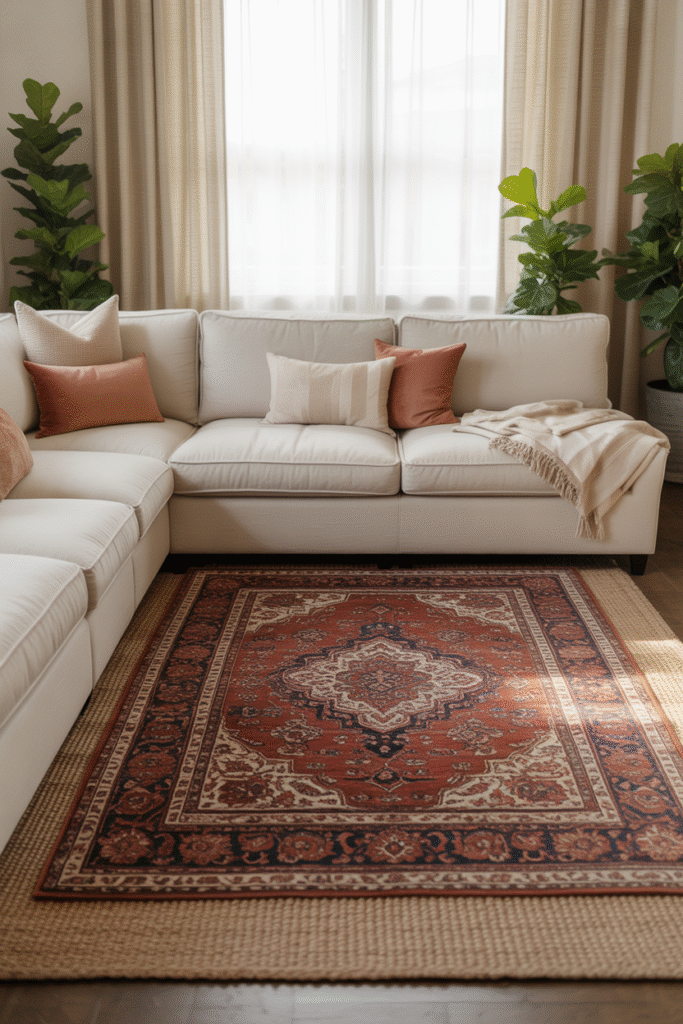
You should take part in a contest for one of the best blogs on the web. I will recommend this site!
Real nice design and style and fantastic subject material, absolutely nothing else we need : D.
Some truly good information, Gladiola I found this. “War does not determine who is right – only who is left.” by Bertrand Russell.